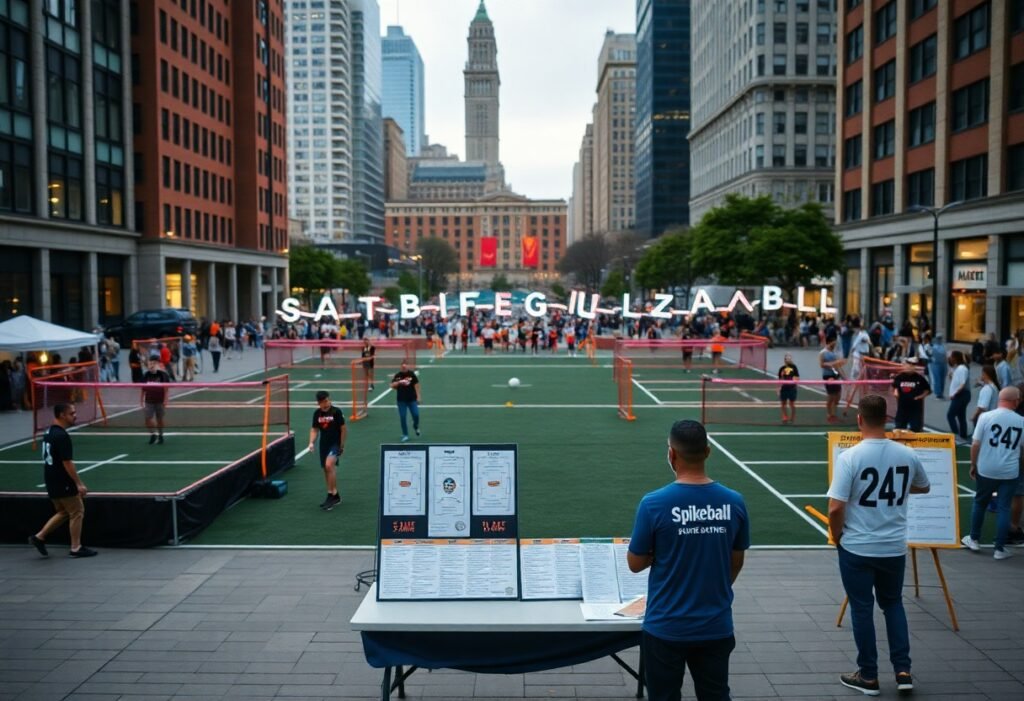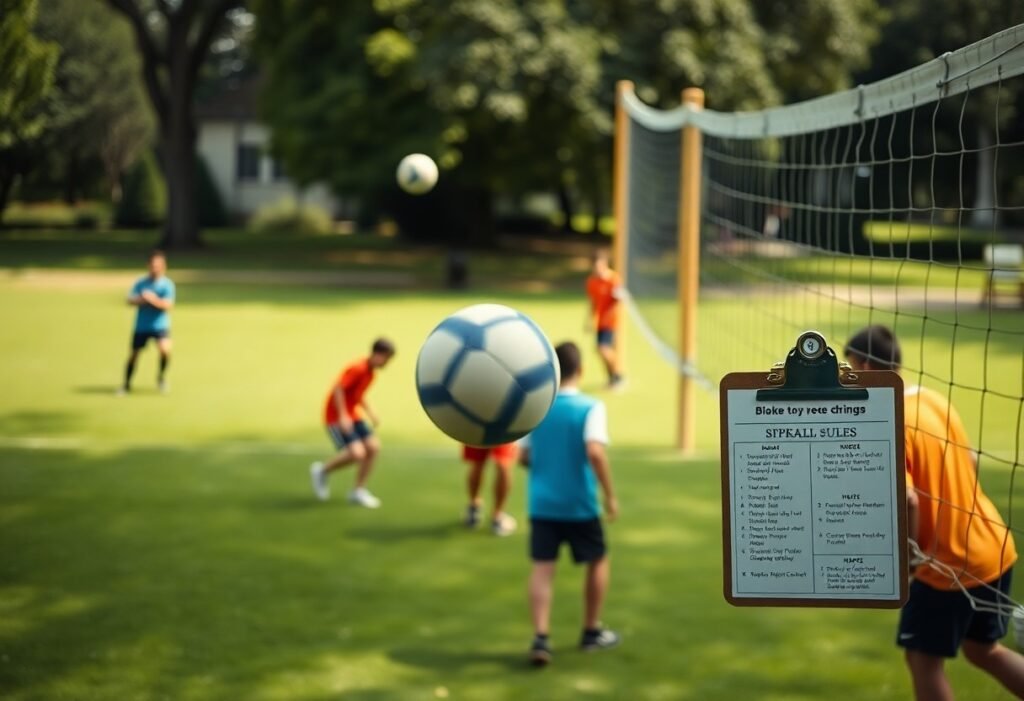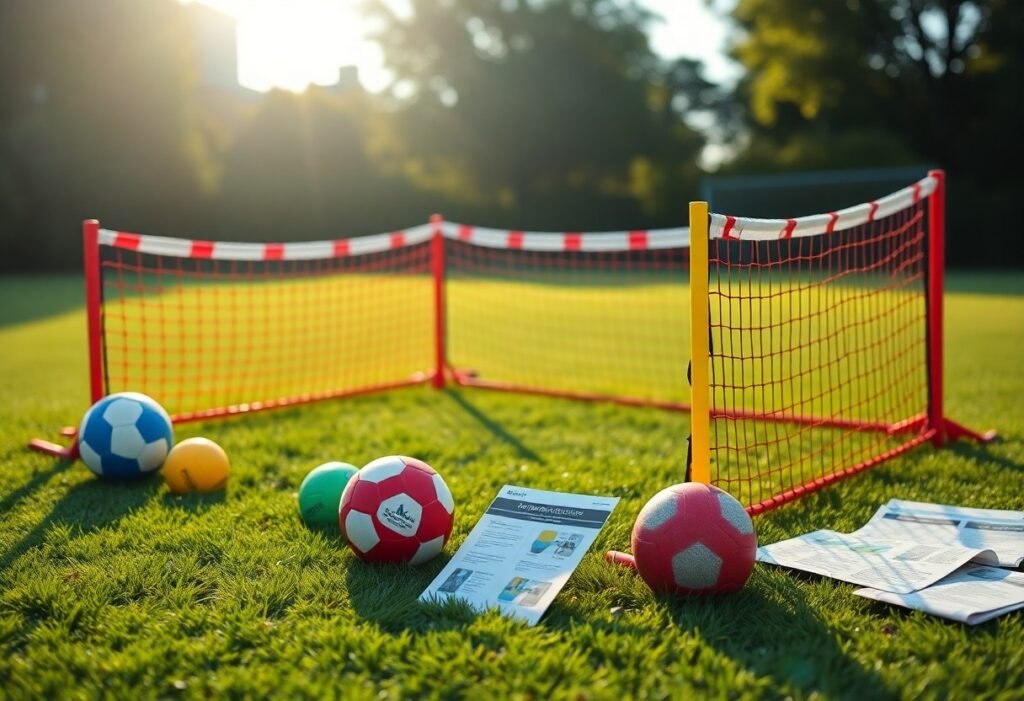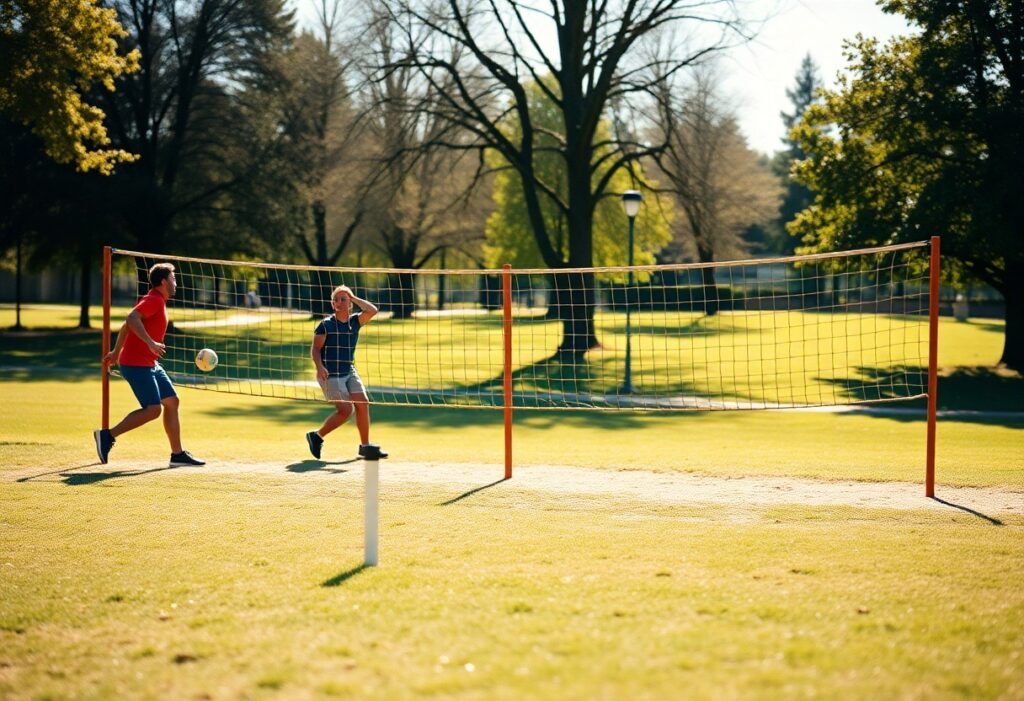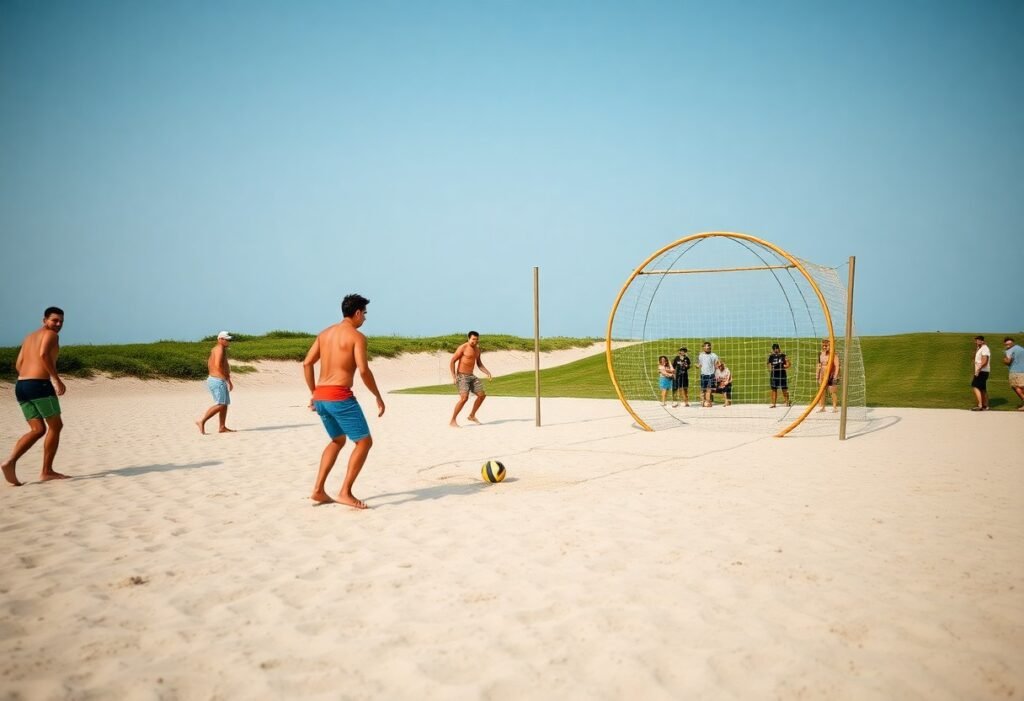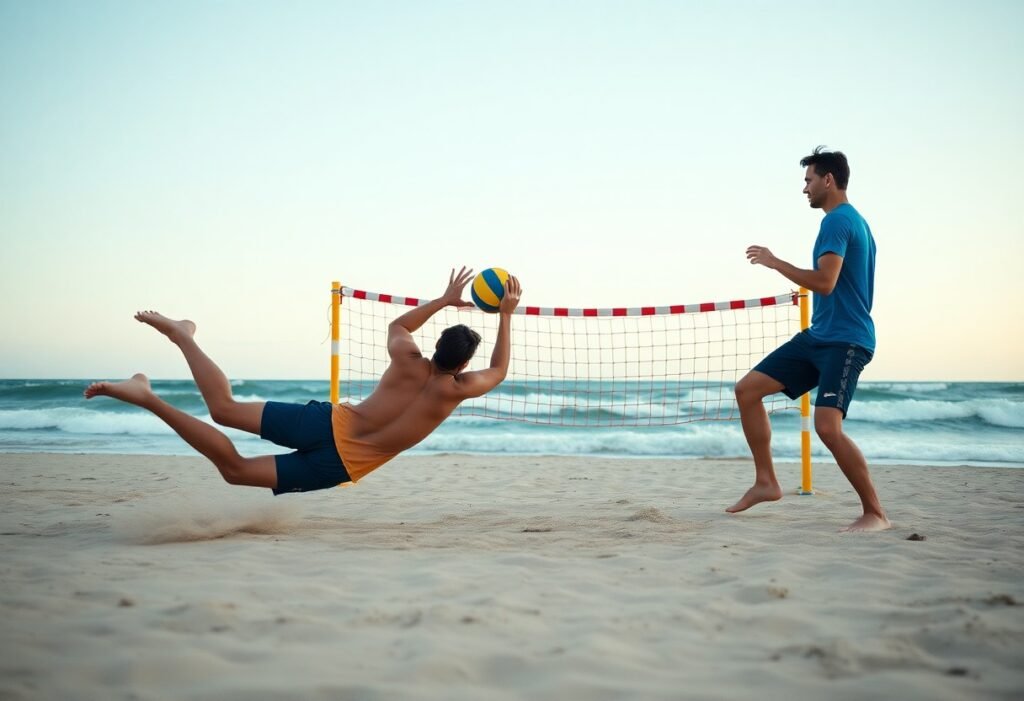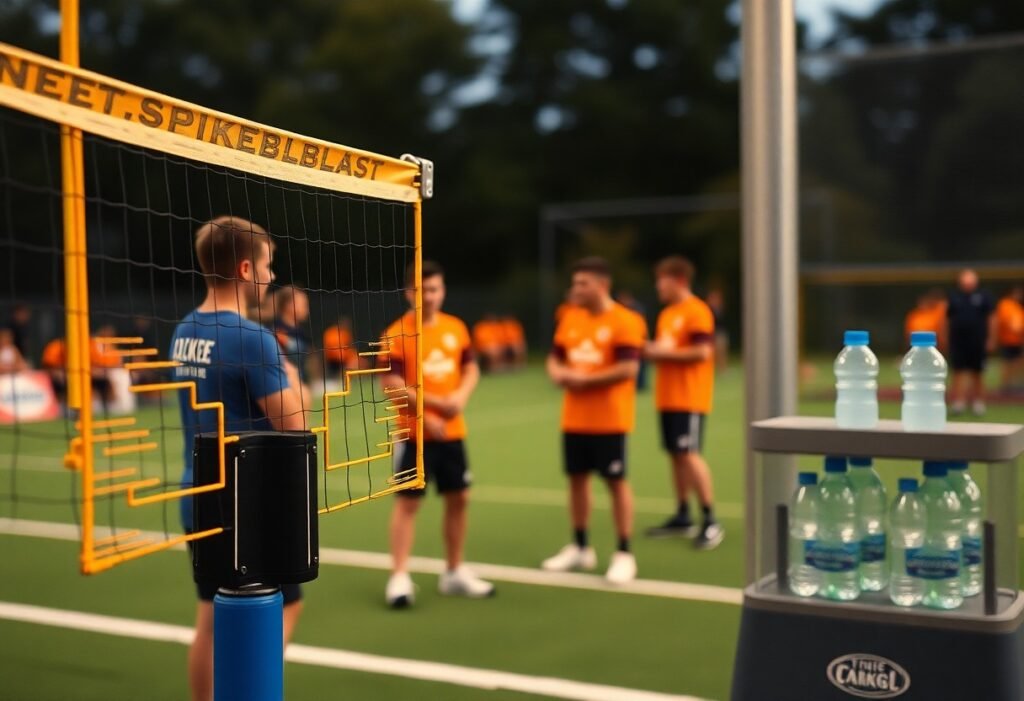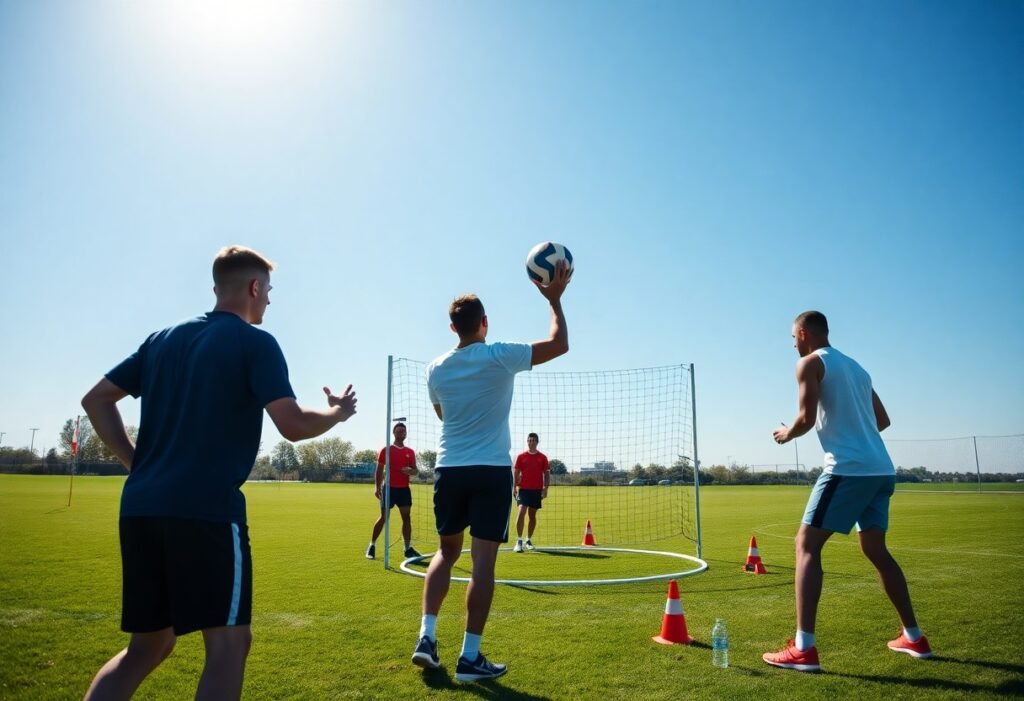Tournament planning can be an exciting endeavor, especially when it involves the energetic game of Spikeball. You can create an engaging event by securing a suitable location, promoting via social media, and gathering a reliable group of participants. Ensure to establish clear rules and prizes to attract players and keep the competition lively. By focusing on logistics and engaging your community, you can host a memorable tournament that brings people together to enjoy this fast-paced sport.
Most people enjoy playing Spikeball, and hosting a tournament can be a fun and rewarding way to bring your community together. To create a successful event, you’ll need to plan everything from location to prizes, ensuring a smooth experience for all participants. This guide will walk you through the necessary steps to organize and promote your tournament effectively, maximizing both engagement and excitement in your city. Get ready to showcase your organizational skills and passion for the game!
Key Takeaways:
- Secure a suitable venue with ample space for courts and spectators.
- Establish clear rules and format for the tournament to ensure fair play.
- Promote the event through social media and local sports communities to attract participants.
Key Takeaways:
- Secure a suitable location with enough space for multiple courts and participants.
- Promote the event through social media and local community channels to attract competitors.
- Establish clear rules and a structured schedule to ensure smooth tournament progression.
Understanding Spikeball
What is Spikeball?
Spikeball is an exciting and fast-paced sport that combines elements of volleyball and four-square. Played with a round net placed at ankle height, teams of two aim to hit a small ball off the net in such a way that the opposing team cannot return it. This unique setup allows for quick rallies and strategic plays, making it a thrilling game for spectators and players alike.
The Popularity of Spikeball
The rise of Spikeball as a popular recreational activity has been remarkable in recent years. With over 650,000 Spikeball sets sold since its inception and a rapidly growing community, the sport has earned a dedicated following. Social media has played a significant role in spreading its appeal, with countless videos showcasing incredible rallies and tricks drawing in new players.
Beyond just recreational play, the emergence of the Spikeball Roundnet Association (SRA) has helped formalize the sport, organizing tournaments and events across the country. Participation in these tournaments has surged, with many attracting hundreds of teams. This community-driven aspect, coupled with endorsements from influencers and athletes, has led to a robust interest in both casual and competitive Spikeball, making it a staple at parks, beaches, and college campuses nationwide.
Planning Your Spikeball Tournament
Setting Clear Objectives
Before plunging into logistics, establish what you want to achieve with your tournament. Do you aim to foster community engagement, raise funds for a charity, or simply create a fun day for participants? Define your goals to shape the tournament’s format, such as whether it will be competitive or casual, and to guide decisions on prizes, sponsorships, and promotion strategies.
Choosing the Right Date and Time
Selecting an ideal date and time is fundamental for maximizing attendance. Aim for a weekend when most participants are free, avoiding local events or holidays that might draw crowds away. You could consider hosting your tournament in late spring or early fall when the weather is typically favorable for outdoor activities.
To further ensure a good turnout, research local events or school calendars that might conflict with your chosen date. Poll potential participants via social media to find out their availability, which can guide you in setting a time everyone’s likely to enjoy, such as mid-morning or early afternoon.
Selecting a Suitable Location
Choosing a venue with enough space is important to accommodate multiple games and spectators. Look for parks or community centers that allow for ample outdoor setup and have accessible facilities. Ensure that there are flat surfaces free of hazards, as uneven ground can impact gameplay.
Additionally, consider the location’s accessibility and amenities, such as parking, restroom facilities, and shade areas. A venue that offers a balance of visibility and comfort can enhance the experience for participants and spectators alike, increasing the likelihood of a successful tournament.
Planning Your Tournament
Setting Goals and Objectives
Define what success looks like for your tournament. Are you aiming for a specific number of participants, raising funds for a charity, or fostering community engagement? Tailor your goals to align with your motivations and the interests of potential players. Having clear objectives helps measure your success and keeps you focused throughout the planning process.
Choosing the Right Date and Venue
Select a date that minimizes conflicts with major local events or holidays. A weekend or holiday often attracts more participants. When choosing a venue, ensure there’s enough space for multiple Spikeball courts, spectator areas, and amenities like restrooms and parking.
Consider proximity to your target audience; a central location often boosts participation. Check local parks, sports complexes, or school grounds that may offer suitable spaces. It’s crucial to confirm that the venue can accommodate weather fluctuations, so look into options that provide indoor alternatives or covered areas, especially if you’re planning for early spring or late fall.
Considering Local Regulations and Permits
Research local regulations associated with hosting outdoor sporting events. You might need permits for using public spaces or specific insurance coverage. Ensure you are aware of noise ordinances and any regulations concerning food vendors or other activities that may take place during the tournament.
Engaging with local authorities early in your planning process helps avoid last-minute complications. Some venues may have specific guidelines you must follow, and consulting with city officials can provide insights into necessary permits or potential restrictions regarding capacity and safety protocols. Understanding these factors ensures compliance and eliminates unforeseen issues on tournament day.
Understanding the Rules of Spikeball
Official Spikeball Rules
Familiarize yourself with the official Spikeball rules to ensure a competitive and enjoyable tournament experience. Each match consists of two teams of two players, and the objective is to hit the ball onto the net in such a way that the opposing team cannot return it. Teams have three hits, similar to volleyball, to return the ball. Specific rules around scoring, fouls, and net violations are important to clarify beforehand to prevent disputes during games.
Creating a Tournament Format
Decide on a tournament format that accommodates your participants and keeps the event engaging. You could opt for single elimination, double elimination, or a round-robin setup, each providing varying levels of playtime and competition. This choice shapes the experience; for instance, round-robin formats allow more teams to play more matches, while single elimination adds intensity to each game.
A typical round-robin format requires all teams to face each other, accumulating points based on match wins. In contrast, a double elimination format permits teams a second chance after a loss, promoting participation. Consider the size of your player pool; for 16 teams, for example, a round-robin setup affords each team the chance to play multiple matches before determining the finalists.
Ensuring Fair Play
Implementing measures for ensuring fair play is necessary for tournament integrity. Establish clear guidelines for player conduct and have a system for addressing disputes swiftly. Consider appointing referees or volunteers who can enforce the rules and mediate any challenging situations. This strategy keeps the competitive spirit high while allowing players to focus on the game.
Provide a set of rules and guidelines to all players before the tournament begins. This transparency helps prevent misunderstandings and encourages mutual respect among competitors. Additionally, having penalty guidelines for rule infractions reinforces the importance of fair play and accountability. Regular communication can foster a positive atmosphere, making your tournament memorable for everyone involved.
Gathering Participants
How to Promote Your Tournament
Utilize social media platforms like Facebook, Instagram, and Twitter to spread the word about your Spikeball tournament. Create engaging posts and event pages that include all necessary details—date, location, registration link, and tournament format. Consider partnering with local sports shops or community centers for cross-promotion, and leverage local influencers to reach a broader audience. Flyers in parks and online community forums can also help generate interest.
Registration Processes and Tools
Implementing an efficient registration process is important for smoothly managing participants. Consider using platforms like Eventbrite or Google Forms to streamline sign-ups. Ensure to include fields for team names, player details, and contact information. Sending confirmation emails will help you keep track of registrants while fostering a sense of commitment.
Creating a Participant Cap and Teams Structure
Defining a participant cap will help you manage your tournament size efficiently. Determine a realistic number based on the venue’s capacity and the time allocated for matches. You can organize teams in various formats: a classic two-on-two, or create a more engaging round-robin style, allowing each team to play multiple matches.
Setting a participant cap at around 16 to 32 teams ensures adequate playtime and minimizes scheduling conflicts. With teams structured as pairs, you can create up to 16 teams in a standard format or expand to unique configurations like three-on-three for larger events. Balancing competition with fun is key, so consider grouping teams based on skill levels to enhance the overall experience.
Organizing Teams and Participants
Promoting the Event
To attract participants, utilize social media platforms, community boards, and local sports clubs to promote your Spikeball tournament. Create engaging graphics and videos that showcase the excitement of Spikeball, and share information about the venue, date, and registration process. Encourage players to bring friends, offering incentives like group discounts or freebies for early registrations to generate buzz and draw in larger crowds.
Registering Participants
Create an easy, accessible registration process to streamline participant sign-ups. Utilize online platforms like Eventbrite or Google Forms to collect participant information, team names, and skill levels. Clearly outline the registration deadlines, fees, and tournament structure to ensure everyone is on the same page. Leverage existing local Spikeball groups to help promote registration.
If you successfully promote your tournament, you should expect a mix of amateur and seasoned players. Offering separate divisions based on skill levels ensures a more enjoyable and competitive atmosphere. You can also establish early bird rates or promotional pricing to motivate prompt registration and gauge turnout numbers ahead of time, enabling better resource planning.
Managing Team Assignments
Organize teams based on skill levels and create a balanced competitive environment. Use participant data to group players effectively, ensuring each team has a mix of experience. Team assignments can be communicated via email or a dedicated event app, allowing for easy updates as registration progresses.
Tournament Format
Single Elimination vs. Double Elimination
When choosing your tournament format, consider single elimination for a faster-paced event, where teams are eliminated after one loss. This format creates excitement and urgency but can be harsh for teams that perform poorly in their first match. Alternatively, double elimination allows teams to lose once and still compete for the championship, offering a second chance and a more balanced experience for participants.
Round Robin Approach
A round robin format involves each team playing against all other teams. This ensures that every participant has multiple opportunities to showcase their skills, promoting inclusivity and engagement. It also helps determine the strongest teams based on overall performance rather than a single match outcome.
In a round robin setup, you can schedule matches over a set period, like a weekend or day-long event. Depending on your number of teams, you might format matches into pools, where teams can compete in smaller groups before advancing to a playoff stage. This method emphasizes sportsmanship and allows teams to build camaraderie by playing against multiple opponents rather than facing elimination early on.
Determining Game Rules and Scoring
Establishing clear game rules and scoring is vital for the tournament’s success. You should utilize the official Spikeball rules, including match durations, scoring systems, and conduct guidelines. Consistency across all matches will help maintain fairness and clarity for participants and spectators alike.
Consider setting a scoring system, such as playing to 21 points in each game, and implementing a best-of-three format to maximize competitive spirit. You might also want to create specific rules regarding equipment and match conduct, ensuring that all players understand the expectations ahead of time. This preparation minimizes disputes and enhances the event’s overall atmosphere.
Logistics and Equipment
Securing Spikeball Sets
You’ll need to secure multiple Spikeball sets to accommodate all teams participating in your tournament. Consider reaching out to local sports stores for rental options or contacting Starting a Spikeball league. Any advice? community on Reddit for second-hand purchases. A well-stocked inventory will ensure that everyone has access to the proper equipment and can enjoy the game without confusion or delay.
Arranging Necessary Equipment
Beyond Spikeball sets, you’ll require additional gear such as nets, boundaries, and scoring equipment. A proper tournament setup fosters a competitive and fun atmosphere. Purchase or rent items like cones for court boundaries, clipboards for scorekeeping, and first-aid kits for emergencies. Ensure you have enough equipment for smooth transitions between matches.
If your tournament features various skill levels, consider having different net heights or extra balls available. Organizing equipment in advance prevents mishaps on the day and ensures everyone can enjoy continuous play. Check local online marketplaces or community forums for bulk purchase deals to keep costs manageable.
Preparing the Playing Area
Choose a suitable venue with ample flat space for setting up the Spikeball courts. Ideally, you should look for areas with soft ground such as grass or sand, which are safer and more comfortable for players. Make sure to layout your courts in a way that provides enough space between them for spectators and players transitioning between matches. If possible, ensure access to amenities like restrooms and hydration stations to keep participants refreshed.
Pay attention to the layout of the tournament area by marking clear boundaries and ensuring visibility for spectators. Providing shaded areas for breaks can help participants stay cool and engaged throughout the event. Consider setting up a designated check-in table for teams to gather and receive schedules, keeping everything organized and running smoothly.
Logistics and Equipment
Necessary Spikeball Gear
To host a successful Spikeball tournament, you’ll need necessary gear, including multiple Spikeball sets to accommodate various matches. Consider investing in quality balls and nets, as durability affects gameplay. Each team requires at least one complete set, so calculate the number needed based on the number of teams participating. For insightful tips on managing equipment, check out Starting a Spikeball league. Any advice?
Setting Up the Venue
Select a venue that has ample open space, ideally a grass or sand area that is smooth and free from obstructions. Ensure you have at least two separate courts for concurrent matches to keep the tournament flowing efficiently. Mark the boundaries clearly and prepare for sufficient seating for players and spectators alike.
Scheduling Matches and Keeping Time
Establish a clear schedule for matches, dividing teams into brackets based on your tournament format. Each match should be timed, typically lasting around 15-20 minutes, including warm-up time. Use a visible timer and communicate start and end times to maintain order throughout the event.
To keep everything on track, consider using a scheduling app or printed brackets distributed to teams. Ensure that you have an announcement system in place to relay information promptly. Properly managing the schedule prevents delays and keeps players engaged, fostering a positive tournament atmosphere.
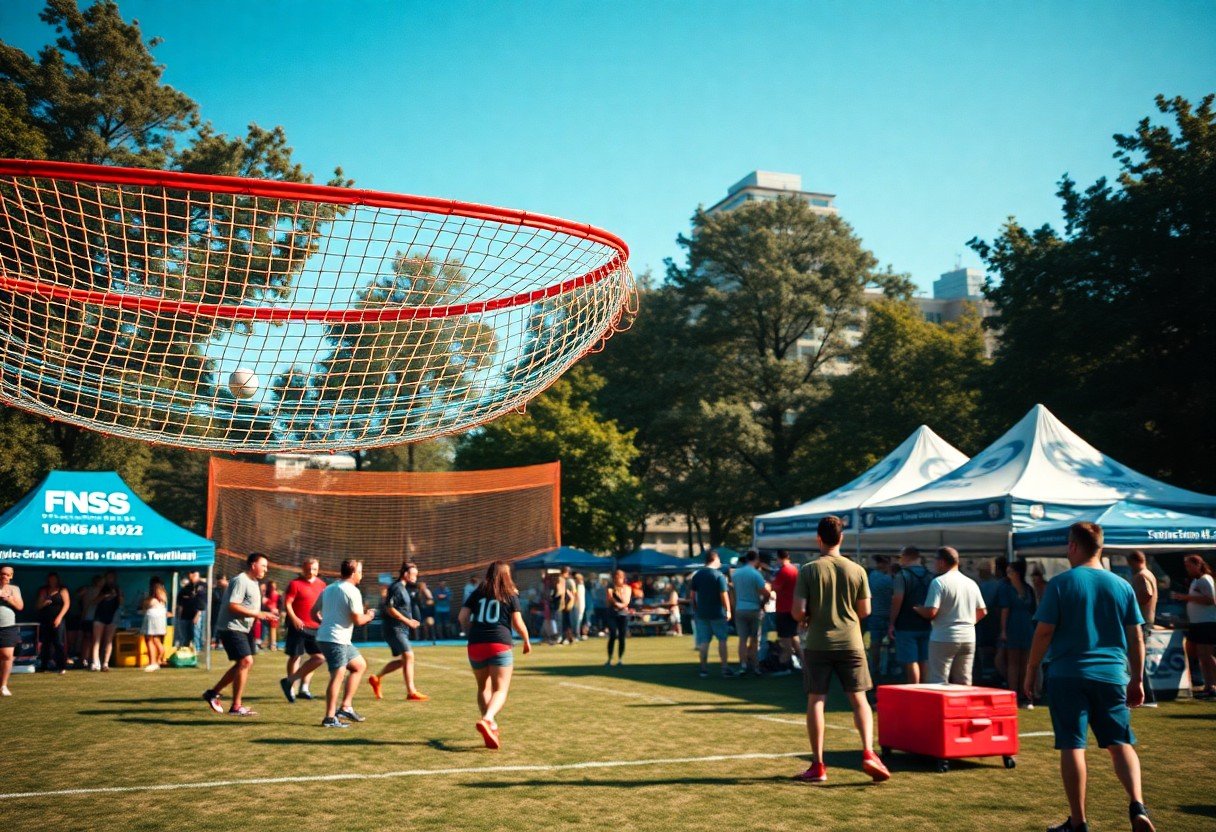
Event Promotion and Marketing
Utilizing Social Media
Social media platforms like Facebook, Instagram, and Twitter are your best friends when it comes to promoting your Spikeball tournament. Create an event page on Facebook, showcasing details such as the date, location, and registration link. Use vibrant photos and engaging captions to spark interest. Regular updates, countdowns, and behind-the-scenes content can keep potential participants excited and informed, driving up attendance rates.
Creating Event Flyers
Designing eye-catching flyers can significantly enhance your visibility. These flyers should include crucial information like date, location, registration details, and social media handles. Utilize bold colors, clear fonts, and appealing graphics to draw attention. Distribute these flyers in local parks, community centers, and college campuses to reach your target audience effectively.
When creating event flyers, focus on clarity and engagement. Make sure the crucial details stand out, but don’t overwhelm potential participants with too much text. Use a call-to-action, encouraging people to register or follow your event on social media. Consider adding QR codes for easy access to registration links. The more visually appealing and informative your flyers are, the greater the chance they’ll be shared among friends and family.
Engaging Local Media
Contacting local media outlets can help amplify your event’s reach. Send press releases to newspapers, radio stations, and community news websites detailing your tournament. Highlight unique aspects of the event, such as any local teams participating or community involvement, to grab their attention.
Engaging local media requires a proactive approach. Craft a compelling press release that outlines the tournament’s significance in the community, any notable sponsors, and the overall impact on local sports culture. Consider inviting media representatives to cover the event or offering interviews with players or event organizers. This coverage can lead to increased visibility and help attract spectators and participants alike.
Engaging Spectators and Participants
Creating a Festive Atmosphere
To enhance the tournament experience, it’s vital to create a festive atmosphere that captivates both players and spectators. Utilize colorful banners, vibrant décor, and cheerful music to set the scene. Engaging activities such as a photo booth or local DJ can foster excitement and encourage community involvement, creating an inviting environment that enhances the overall event experience.
Planning for Food and Beverages
Offering a selection of food and beverages is imperative to keeping participants and spectators energized throughout the tournament. Consider partnering with local food trucks or vendors to provide diverse options that cater to various dietary preferences, ensuring nobody goes hungry or thirsty during the event.
Plan to include items like refreshing beverages, healthy snacks, and hearty meal options to cater to attendees’ needs throughout the day. By incorporating local vendors, you not only support your community but also keep your guests energized. Offer a variety of drinks, from water stations to craft sodas, to quench thirst on hot days, enhancing the overall experience.
Incorporating Prizes and Awards
Incorporating prizes and awards elevates the competitive spirit of your tournament, motivating players to perform their best. Consider awarding medals, trophies, or gift cards to the top teams, which can foster excitement and camaraderie among participants.
Choose prizes that resonate with your target audience, such as themed gear or local business vouchers, which not only promote friendly competition but also strengthen community ties. Highlighting these awards during the event encourages participation, and announcing winners in an engaging, lively manner helps create memorable moments that will keep players and spectators talking about the tournament long after it concludes.
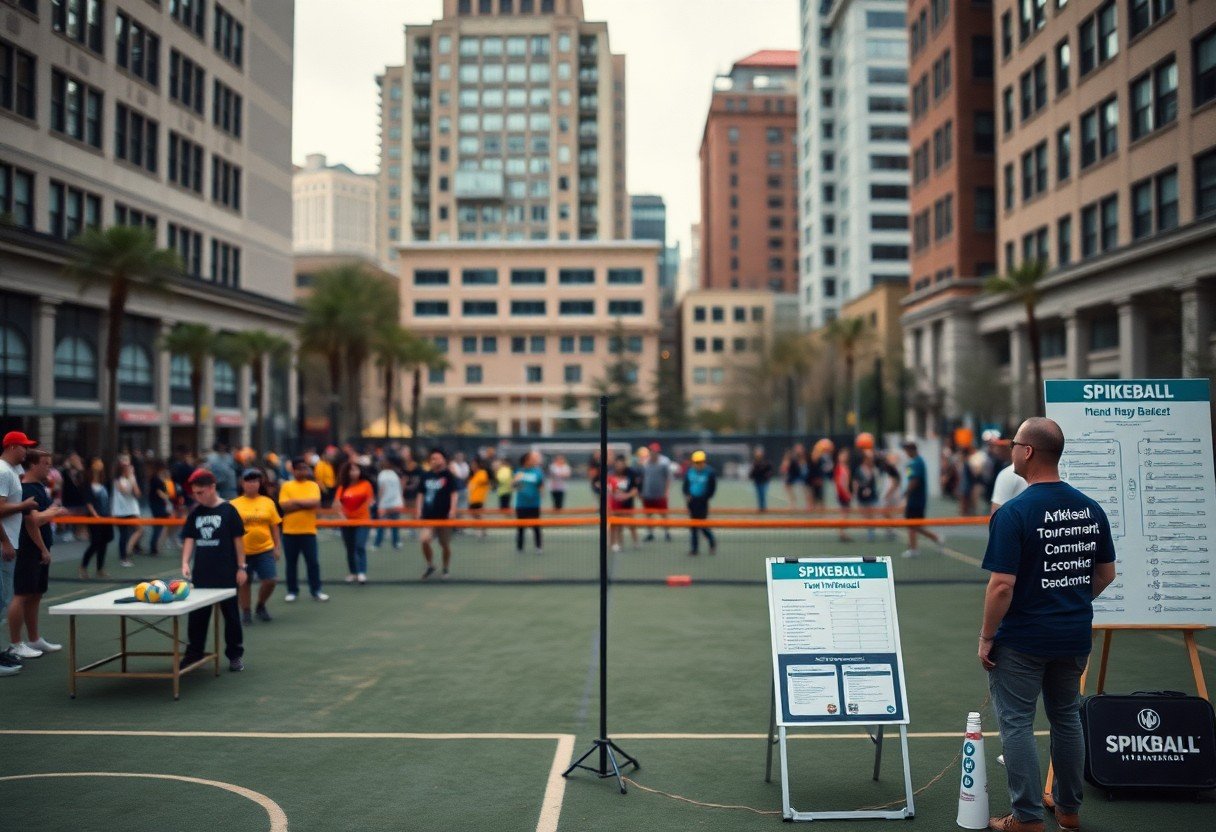
Managing the Tournament Day
Setting Up the Venue
Before the tournament starts, you’ll need to efficiently set up the venue. Arrive early to mark boundaries for each court, ensuring enough space between them for safety and spectator visibility. Notably, set up a check-in area where players can confirm their registration, receive schedules, and pick up any materials like T-shirts or schedules. Providing clear signage throughout the location can help participants easily navigate the area.
Coordinating Matches
To keep the tournament flowing smoothly, you must coordinate matches effectively. Assign specific time slots for each game and use a bracket system to manage matchups. This allows for quick transitions between games, minimizing downtime and keeping players engaged. You can use digital tools or apps to display live updates on match statuses for both participants and spectators.
Consider appointing a dedicated person or a small team to oversee the match coordination. This team should be equipped with walkie-talkies or mobile phones to communicate swiftly about delays or updates. Encourage each team to check in right before their matches to stay punctual. A well-coordinated match schedule reduces confusion and maximizes the tournament experience.
Handling Disputes and Issues
Disputes can arise during a tournament, so having a clear plan for handling disputes and issues is important. Designate a conflict resolution officer who is knowledgeable about the game’s rules and can make fair judgments. This person should have a visible presence at the venue to assist with any conflicts as they arise.
Establish clear guidelines for what constitutes a dispute and how players should report them. Encourage sportsmanship among participants, and consider holding a short briefing before the tournament to explain the protocol. Quick resolution of issues not only maintains the integrity of the tournament but also helps preserve a positive atmosphere for all involved.
Final Tips for Success
- Set clear rules and guidelines for teams
- Ensure proper equipment is available
- Have a backup plan for inclement weather
- Consider awards for winners and fun categories
- Promote the event via social media and local channels
- Provide plenty of refreshments and snacks
Perceiving the components of a successful tournament will help you elevate the experience, making it unforgettable for participants and spectators alike.
Post-Tournament Follow-Up
After your tournament, follow up with participants to thank them for joining and provide information on future events. This keeps the engagement alive and fosters community among players, leading to greater attendance in future tournaments.
Gathering Feedback
Utilizing feedback is crucial for improving your tournament. Send out surveys to participants and spectators asking about their experiences, suggestions, and any issues they encountered during the event. This information can help you refine future tournaments.
Consider using platforms like Google Forms to create a simple survey. Ask targeted questions regarding the venue, scheduling, and overall enjoyment. A net promoter score question can also provide insight into how likely participants are to recommend your tournament to friends.
Hosting Future Tournaments
As you plan future tournaments, take note of the lessons learned from the previous ones. Use this knowledge to build upon successful elements while addressing any areas of improvement identified through feedback.
Develop a clear timeline for organizing future events, incorporating seasonal adjustments based on participant availability. Engaging with your community continuously will also help identify the best times and locations for new tournaments, creating a loyal player base ready to join again.
To wrap up
With this in mind, hosting a Spikeball tournament in your city can be an exciting and rewarding experience. You should start by securing a suitable location, gathering the necessary equipment, and promoting the event to attract participants. Organizing the format and rules of play will ensure a smooth tournament flow, while engaging with local sponsors can enhance the experience for everyone. By following these guidelines, you can create a memorable event that fosters community spirit and showcases the thrill of Spikeball.
FAQ
Q: What are the first steps to organize a Spikeball tournament?
A: Start by determining the tournament format (e.g., 2vs2, elimination) and choose a suitable date and location. Secure necessary permits if required, and gather equipment such as Spikeball sets, nets, and boundary markers.
Q: How do I promote the tournament to attract participants?
A: Utilize social media platforms, local community boards, and sports clubs to share event details. Create an event page, distribute flyers, and engage with local schools and universities to spread the word.
Q: What is the best way to handle registrations?
A: Use online registration platforms like Eventbrite or Google Forms to streamline the process. Collect participant information, payment details, and send confirmation emails to ensure smooth communication.
Q: How should I structure the tournament schedule?
A: Plan the tournament by detailing match times, round durations, and breaks in between. Create a bracket system that allows for efficient play and ensure all participants are aware of their match timings.
Q: What should I consider regarding prizes for winners?
A: Decide on prize options such as trophies, medals, or gift cards. Ensure prizes are appealing to increase participant motivation, and consider having small giveaways or participation awards for all competitors.


